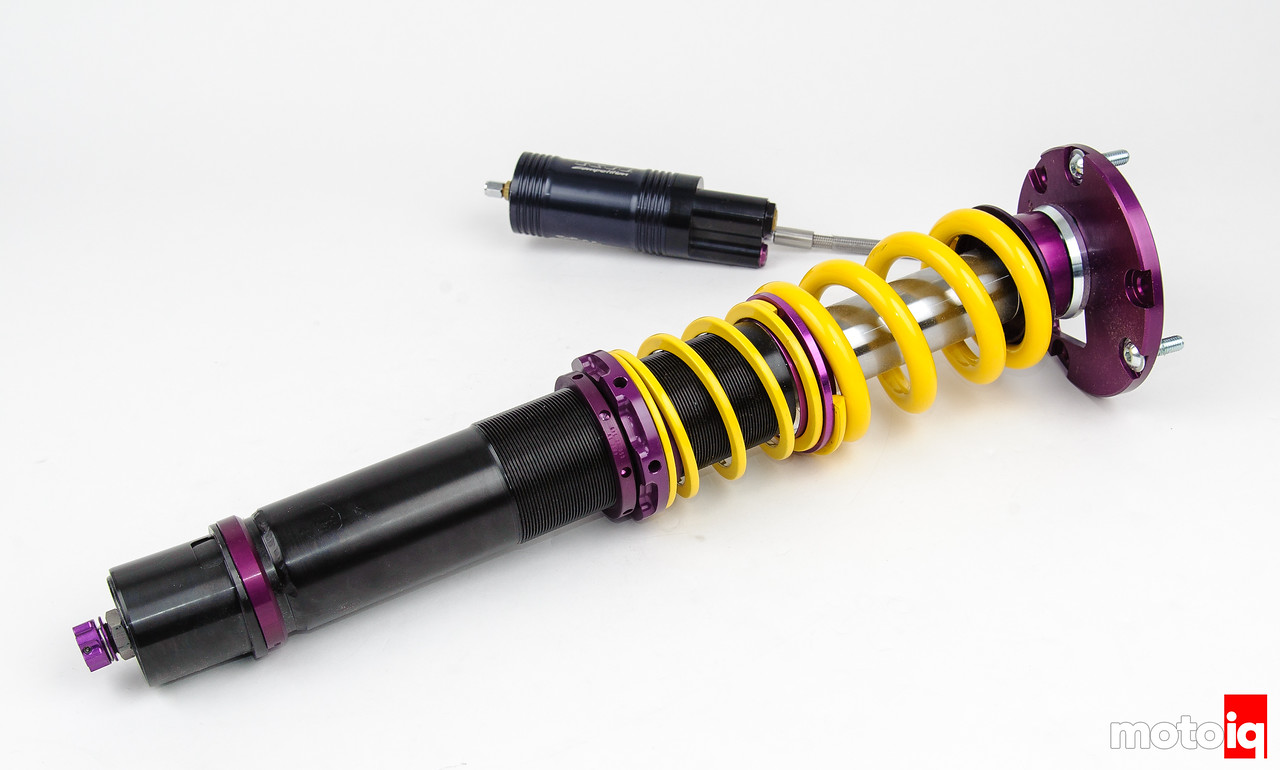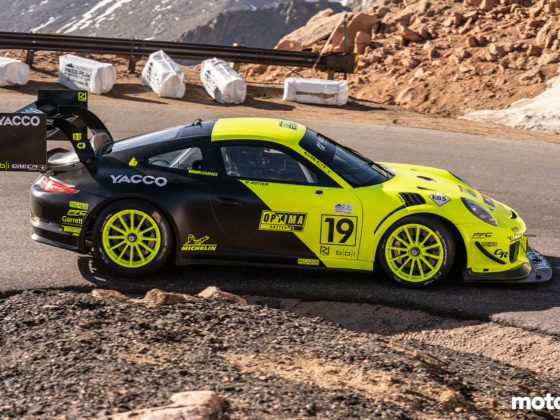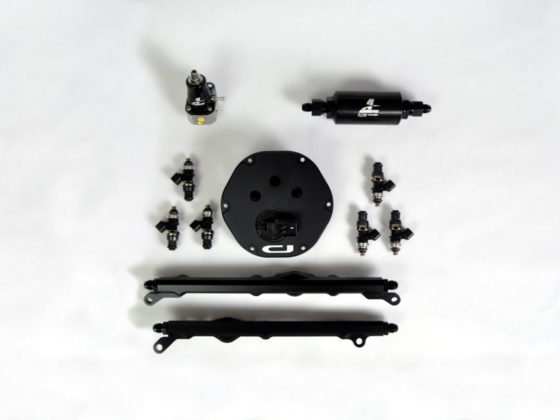Because the inverted shaft strut is basically an upside-down shock, it has to be a monotube or remote reservoir design. A twin-tube shock won’t work here; being upside down would allow the oil and air to mix and cause inconsistent damping. With the cutaway it is easy to see how the inverted shaft strut is greatly superior when it comes to strength and mitigating stress off of the dampers internals.

With an inverted shaft strut the shock shaft bolts to the case from the bottom. So if there is an adjuster it is found down there. This is a three-way adjustable KW Motorsports inverted shaft strut. The rebound adjustment is in the base of the strut.

The KW Motorsports strut is a remote reservoir type and the line to it comes out the top of the strut which would really be the bottom in a conventional strut.

The high and low-speed compression adjusters are found in the reservoir. There is a rubber bladder in there to keep the gas and oil separated which must be done with the inverted shaft.

Here you can see the fat and strong shaft which is really the shock body itself.

Here is an Ohlins DFV inverted shaft MacPherson strut that has been cut away to show the insides. You can see the shock body/shaft, the case that mounts to the knuckle and the actual shaft and piston with the internal bump stop. The DFV valve is some cool Ohlins technology that we will explain in another article in the near future.




5 comments
Could you do a post on Motio Ratio please. How it relates to Spring Rates as well.
Thanks I love Moro IQ
“…looks like a giant thick shaft and it slides up and down inside…” gonna need a NSFW stamp on this article.
Interested in a bit on the Ohlins DFV – actually really interested in how their implementation compares to the various Penske parallel valve ideas (digressive blowoff or regressive blowoff) I know Ohlins does good work but it doesn’t seem like they want to sell you the parts to build the more “advanced” versions of their stuff as easily. Also find it interesting how KW’s competition stuff is monotube, though not actually surprising.
Since the piston rod is thinner on the Inverted strut, would you be able to run lower gas pressures than a non-inverted strut?
Shaft diameter is irrelevant to gas pressure. It affects the valving more.